Friends of Necedah National Wildlife Refuge
The friends of Necedah National Wildlife Refuge is a 501(c)3 organization dedicated to providing time and funds to support the many activities of the refuge. As volunteers, we give over 10,000 hours each year to refuge activities and projects and every dollar we earn is returned to fund those projects.
Gateway to the Refuge
Be sure to make a stop at the Visitor Center when you arrive at the refuge. The friendly volunteers at the front desk will help you plan your experience. They have maps, the latest information on where the wildlife is and for the young folks with you Eagle and Junior Ranger backpacks to check out. You can visit the exhibits and view a short film that will help you get the most out of your experience. When you return, be sure to visit the Karner Korner gift shop where there’s something for everyone.

- Grand Opening 2011
- Free and Open to the Public
- Green Features – LEED Designed
- Federal U.S. Fish and Wildlife Service Refuge Office
Entering Through the Main Doors
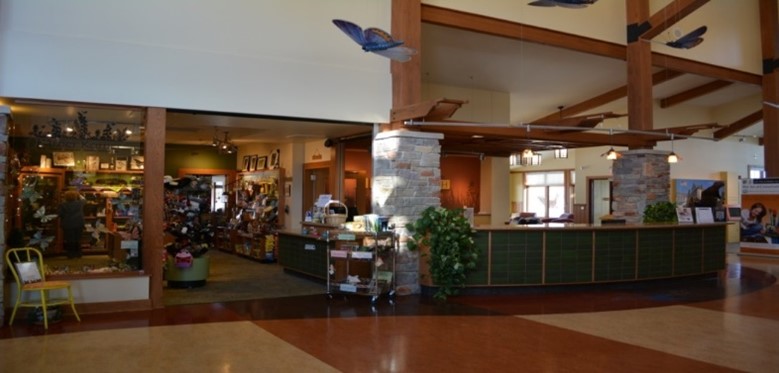
Exhibit Area
- hands-on Minds-on Exhibit
- Refuge Habitats
- Species Diversity
- Information Area
- Friends Nature Store
- Multi-purpose classroom
- Theater

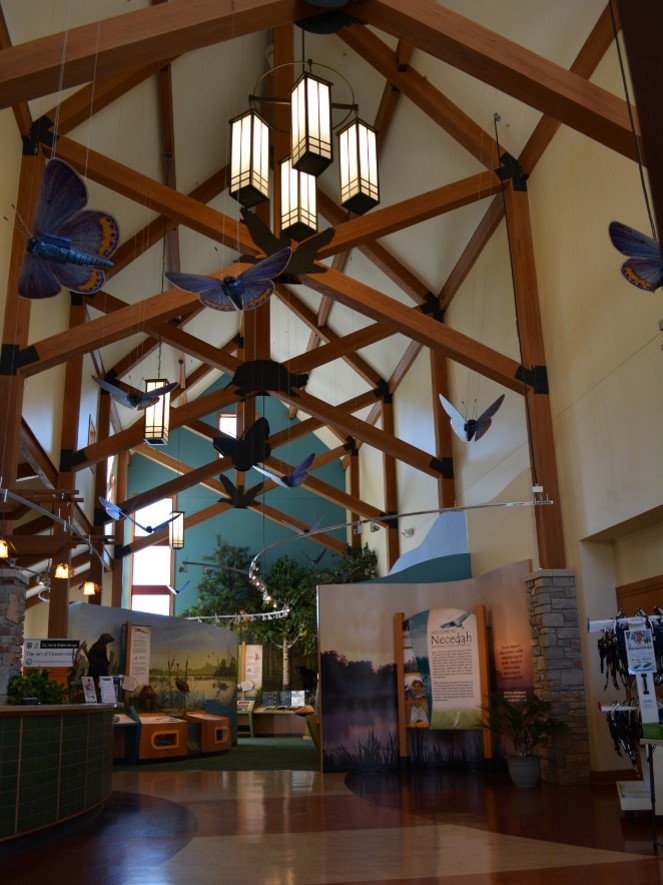
The Origins of the Refuge
The beginnings of the refuge started with the creation of Glacial Lake Wisconsin. It was a large lake that formed about 18,000 years ago when a glacier blocked the outlet of the Wisconsin River around the Baraboo Hills. The lake covered an area of almost 44,000 square miles and reached a depth of 160 feet. It lasted for about 4,000 years until the glacier retreated and the lake drained catastrophically through the south end, carving the Dells of the Wisconsin River in a few days. The lake left behind a flat sandy plain that is now part of the Central Sand Plains and Central Sand Hills ecological landscapes of Wisconsin. The lake also influenced the formation and distribution of the glacial features that are part of the Ice Age National Scientific Reserve, such as moraines, drumlins, eskers, kames, and kettles. The lake also provided habitat for various plants and animals that adapted to the cold and wet conditions. Glacial Lake Wisconsin was one of the largest and longest-lasting proglacial lakes in North America and had a major impact on the geology, ecology, and culture of the region.
In the beginning of the last century, the land that was to become the refuge was ditched, drained and subdivided to encourage farming. Land speculators sold these parcels to families who tried to grow crops on very sandy soil. The poor soil and the Great Depression forced most of the families into bankruptcy and the farms into foreclosure. After much of the land was abandoned, the refuge was established in 1939 by President Franklin D. Roosevelt as a refuge and breeding ground for migratory birds and other wildlife. Today, all that remains of these early farming efforts is a stone silo seen on the Bog Haunter Trail and an old foundation near the site of the Whooping Crane restoration project. The refuge covers an area of almost 44,000 acres, which was once part of a vast peat bog and sand ridges formed by the ancient Glacial Lake Wisconsin. The refuge is home to a diverse ecosystem of wetlands, savannas, and woodlands, which provide habitat for many common and protected species, such as whooping cranes, sandhill cranes, Karner blue butterflies, wolves, red-headed woodpeckers, and trumpeter swans.
The refuge also preserves the cultural heritage of the Native American tribes that inhabited the area, such as the Ho-Chunk, Sauk, Fox, Potawatomi, and Ojibwa. The refuge offers opportunities for people to enjoy and learn about nature through wildlife-compatible activities, such as hiking, hunting, fishing, and attending educational and interpretive programs. The refuge also hosts the Wisconsin Federal Junior Duck Stamp Contest, which encourages students to learn about waterfowl conservation and express their creativity through art. Necedah National Wildlife Refuge is a vital link in the National Wildlife Refuge System, which is a network of over 560 refuges and other protected areas that conserve wildlife and habitats for the benefit of present and future generations.
![]()

The Wetlands of the Refuge
 The wetlands at Necedah National Wildlife Refuge play a vital role in providing habitat and protection for migratory birds and endangered species, as well as maintaining the ecological balance and diversity of the refuge. Wetlands are areas where water covers the soil or is present near the surface, such as marshes, swamps, bogs, and fens. Wetlands support a variety of plants and animals that are adapted to wet conditions, such as cattails, sedges, water lilies, frogs, turtles, muskrats, and beavers. Wetlands also provide important services to humans and the environment, such as filtering pollutants, storing floodwaters, recharging groundwater, and mitigating climate change.
The wetlands at Necedah National Wildlife Refuge play a vital role in providing habitat and protection for migratory birds and endangered species, as well as maintaining the ecological balance and diversity of the refuge. Wetlands are areas where water covers the soil or is present near the surface, such as marshes, swamps, bogs, and fens. Wetlands support a variety of plants and animals that are adapted to wet conditions, such as cattails, sedges, water lilies, frogs, turtles, muskrats, and beavers. Wetlands also provide important services to humans and the environment, such as filtering pollutants, storing floodwaters, recharging groundwater, and mitigating climate change.
The refuge contains extensive wetlands areas that are part of the former Glacial Lake Wisconsin and the Central Wisconsin Swamp. These wetlands have been altered by human activities, such as logging, farming, and ditching, which have drained and degraded the natural hydrology and vegetation of the area. The refuge has been conducting habitat management and restoration strategies to improve the quality and quantity of the wetlands, such as plugging ditches, restoring water levels, controlling invasive plants, and planting native species. The refuge also monitors the water flows and levels of the wetlands, using methods such as stream gauges, water wells, and remote sensing.
The wetlands at the refuge attract many migratory birds and endangered species, such as whooping cranes, sandhill cranes, trumpeter swans, tundra swans, Snow geese, Canada geese, wood ducks, mallards, northern pintails, golden-winged warblers, red-headed woodpeckers, bobolinks, great horned owls, barred owls, eastern screech-owls, northern saw-whet owls, Karner blue butterflies, and Blanding’s turtles. These species depend on the wetlands for nesting, feeding, resting, and socializing. The refuge also provides opportunities for visitors to observe and learn about these species and their habitats, as well as to enjoy other recreational activities, such as hiking, hunting, fishing, and photography.
The wetlands at Necedah National Wildlife Refuge are a vital part of the refuge and the region, and they need our respect and support to survive and thrive.
The Savannas of the Refuge
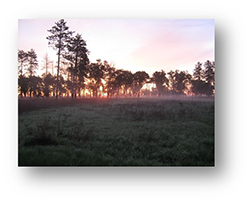 Savannas are open grasslands with scattered trees and shrubs, which are adapted to fire, drought, and grazing. Savannas are one of the natural habitats that can be found at the Necedah National Wildlife Refuge, a large protected area in Wisconsin that provides habitat for many common and endangered animals and plants. Savannas are important for biodiversity and conservation, as they support a variety of plant and animal species, such as wild lupine, Karner blue butterfly, and red-headed woodpeckers.
Savannas are open grasslands with scattered trees and shrubs, which are adapted to fire, drought, and grazing. Savannas are one of the natural habitats that can be found at the Necedah National Wildlife Refuge, a large protected area in Wisconsin that provides habitat for many common and endangered animals and plants. Savannas are important for biodiversity and conservation, as they support a variety of plant and animal species, such as wild lupine, Karner blue butterfly, and red-headed woodpeckers.
The savannas at the refuge are part of the historic oak savannas and sand prairies that once covered much of central Wisconsin. These savannas were shaped by natural disturbances, such as fire, wind, and flooding, as well as by human activities, such as logging, farming, and ditching. These disturbances created a mosaic of habitats, such as wetlands, forests, grasslands, and savannas, that attracted many migratory birds and endangered species.
The refuge has been conducting habitat management and restoration strategies to improve the quality and quantity of the savannas, such as prescribed burning, mowing, herbicide application, and planting native species. The refuge also monitors the plant and animal communities of the savannas, using methods such as vegetation surveys, wildlife surveys, and remote sensing.
The savannas at the Necedah National Wildlife Refuge are a vital part of the refuge and the region, and they need our respect and support to survive and thrive. You can enjoy the beauty and diversity of the savannas at the refuge, as well as learn more about them and their habitats. You can also participate in citizen science and volunteer programs, such as the Karner Blue Butterfly Monitoring Program, which trains volunteers to conduct surveys and collect data on the Karner blue butterfly and its habitat.
Sedge Meadows at the Refuge
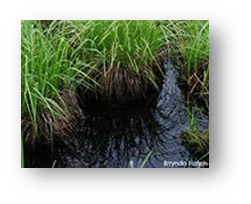 Sedge meadows are a type of wetland habitat that are dominated by sedges, grass-like plants that have triangular stems and grow in dense clumps. Sedge meadows are important for wildlife because they provide food, shelter, and nesting sites for many species of birds, mammals, amphibians, reptiles, and insects. Sedge meadows also help filter water, store carbon, and prevent soil erosion.
Sedge meadows are a type of wetland habitat that are dominated by sedges, grass-like plants that have triangular stems and grow in dense clumps. Sedge meadows are important for wildlife because they provide food, shelter, and nesting sites for many species of birds, mammals, amphibians, reptiles, and insects. Sedge meadows also help filter water, store carbon, and prevent soil erosion.
Necedah National Wildlife Refuge is a diverse ecosystem that includes open tallgrass prairies, sprawling savannas, numerous wetland types including sedge meadows, and is home to many common and protected species. The refuge was established in 1939 by President Franklin D. Roosevelt to conserve migratory birds and other wildlife. The refuge covers 44,000 acres of land that was once part of Glacial Lake Wisconsin, an ancient lakebed that was exposed by retreating glaciers 10,000 years ago.
Some of the wildlife that can be found in the sedge meadows of Necedah National Wildlife Refuge are whooping cranes, wolves, Karner blue butterflies, ringed bog hunter dragonflies, trumpeter swans, and badgers. The refuge is also the site of a reintroduction project for the endangered whooping crane, which is the tallest bird in North America and one of the rarest. The refuge continues to host a flock of migrating whooping cranes.
If you are interested in visiting Necedah National Wildlife Refuge, you can enjoy a variety of activities such as hiking, hunting, fishing, wildlife watching, photography, and participating in programs. The refuge has a visitor center that provides information and exhibits about the refuge’s history, habitats, and wildlife. The refuge is in central Wisconsin, 4-1/2 miles west of Necedah on Hwy 21.
![]()
Prairies at the Refuge
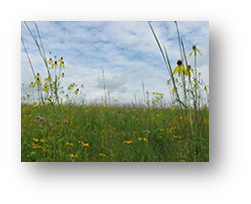 The prairie at Necedah National Wildlife Refuge is a beautiful and diverse habitat that supports many wildlife species. the prairie is a type of grassland that has mostly native grasses and wildflowers, such as big bluestem, Indian grass, and purple coneflower. the prairie is maintained by periodic fires, which help reduce woody plants and invasive species, and enhance the growth and diversity of native plants. The prairie at Necedah National Wildlife Refuge is home to many animals, such as sandhill cranes, whooping cranes, Karner blue butterflies, badgers, and prairie chickens. The prairie also provides food and shelter for migratory birds, such as ducks, geese, and shorebirds. Some of the rare and endangered species that can be found in the prairie are the whooping crane, the tallest bird in North America and one of the rarest, the Karner blue butterfly, a small and delicate insect that depends on wild lupine plants. The prairie is especially beautiful in the spring and summer, when the wildflowers are blooming, and the birds are singing. You might even catch a glimpse of a whooping crane or a Karner blue butterfly!
The prairie at Necedah National Wildlife Refuge is a beautiful and diverse habitat that supports many wildlife species. the prairie is a type of grassland that has mostly native grasses and wildflowers, such as big bluestem, Indian grass, and purple coneflower. the prairie is maintained by periodic fires, which help reduce woody plants and invasive species, and enhance the growth and diversity of native plants. The prairie at Necedah National Wildlife Refuge is home to many animals, such as sandhill cranes, whooping cranes, Karner blue butterflies, badgers, and prairie chickens. The prairie also provides food and shelter for migratory birds, such as ducks, geese, and shorebirds. Some of the rare and endangered species that can be found in the prairie are the whooping crane, the tallest bird in North America and one of the rarest, the Karner blue butterfly, a small and delicate insect that depends on wild lupine plants. The prairie is especially beautiful in the spring and summer, when the wildflowers are blooming, and the birds are singing. You might even catch a glimpse of a whooping crane or a Karner blue butterfly!
Black Bears in the Refuge
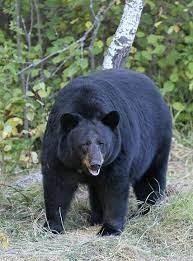 Bears are one of the wildlife species that live in the Necedah National Wildlife Refuge, a large, protected area in Wisconsin that provides habitat for many common and endangered animals and plants. According to the National Wildlife Federation, bears are omnivorous mammals that have thick fur, powerful jaws, and sharp claws. They can weigh up to 600 pounds and can run up to 30 miles per hour. They feed on plants, berries, nuts, insects, fish, and sometimes other animals. They hibernate in dens during the winter and emerge in the spring. They are usually shy and avoid humans, but they can be dangerous if provoked or threatened.
Bears are one of the wildlife species that live in the Necedah National Wildlife Refuge, a large, protected area in Wisconsin that provides habitat for many common and endangered animals and plants. According to the National Wildlife Federation, bears are omnivorous mammals that have thick fur, powerful jaws, and sharp claws. They can weigh up to 600 pounds and can run up to 30 miles per hour. They feed on plants, berries, nuts, insects, fish, and sometimes other animals. They hibernate in dens during the winter and emerge in the spring. They are usually shy and avoid humans, but they can be dangerous if provoked or threatened.
The refuge is home to black bears, which are the most common and widespread bear species in North America. Black bears have a black or brown coat, a tan muzzle, and a white chest patch. They can be found in various habitats, such as forests, wetlands, and grasslands. They are adaptable and opportunistic, and can sometimes raid garbage cans, bird feeders, or campsites in search of food. They are also good climbers and swimmers. The refuge has a small population of black bears, which are monitored and managed by the refuge staff and the Wisconsin Department of Natural Resources.
These are some of the facts about bears at the Necedah National Wildlife Refuge. They are part of the rich biodiversity and beauty of the refuge, and they need our respect and support to survive and thrive.
Bird Migration at the Refuge
Bird migration is a spectacular phenomenon that occurs every spring and fall, when millions of birds travel across continents and oceans to find suitable habitats for breeding and wintering. The Necedah National Wildlife Refuge is a great place to witness and enjoy this migration, as it provides a variety of habitats, such as wetlands, grasslands, and forests, that attract many different species of songbirds. Some of the birds that you can see at the refuge during spring and fall migration are:
 Golden-winged warbler: This is a small and colorful songbird that has a yellow crown, wing patches, tail spots, and a black mask and throat. It breeds in shrubby habitats, such as young aspen forests, and feeds on insects and spiders. It is one of the most endangered songbirds in North America, due to habitat loss, hybridization with blue-winged warblers, and nest parasitism by brown-headed cowbirds. The refuge is one of the few places in Wisconsin where you can still find this rare and beautiful bird.
Golden-winged warbler: This is a small and colorful songbird that has a yellow crown, wing patches, tail spots, and a black mask and throat. It breeds in shrubby habitats, such as young aspen forests, and feeds on insects and spiders. It is one of the most endangered songbirds in North America, due to habitat loss, hybridization with blue-winged warblers, and nest parasitism by brown-headed cowbirds. The refuge is one of the few places in Wisconsin where you can still find this rare and beautiful bird.
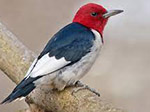 Red-headed woodpecker: This is a medium-sized woodpecker that has a striking red head, neck, and breast, and a black-and-white body and wings. It nests in cavities of dead or dying trees, and feeds on insects, nuts, seeds, and fruits. It also caches food in crevices of trees or fence posts and defends its territory aggressively. It is a species of concern in Wisconsin, due to habitat loss, competition with other cavity-nesters, and collisions with vehicles and windows. The refuge has one of the largest populations of red-headed woodpeckers in the state, and you can see them in the oak savannas and pine barrens of the refuge.
Red-headed woodpecker: This is a medium-sized woodpecker that has a striking red head, neck, and breast, and a black-and-white body and wings. It nests in cavities of dead or dying trees, and feeds on insects, nuts, seeds, and fruits. It also caches food in crevices of trees or fence posts and defends its territory aggressively. It is a species of concern in Wisconsin, due to habitat loss, competition with other cavity-nesters, and collisions with vehicles and windows. The refuge has one of the largest populations of red-headed woodpeckers in the state, and you can see them in the oak savannas and pine barrens of the refuge.
 Bobolink: This is a medium-sized songbird that has a unique plumage and song. The male has a black body, a white back, and a yellow patch on the back of its head, while the female is brown and streaked. The male sings a bubbly and complex song during flight displays, while the female makes a short and sharp call. It nests in grasslands, such as hayfields and prairies, and feeds on seeds and insects. It is a long-distance migrant, traveling from North America to South America and back every year. It is a declining species in Wisconsin, due to habitat loss, degradation, and fragmentation, as well as nest predation and mowing. The refuge has some of the largest and highest quality grasslands in the state, and you can hear and see bobolinks in the open fields of the refuge.
Bobolink: This is a medium-sized songbird that has a unique plumage and song. The male has a black body, a white back, and a yellow patch on the back of its head, while the female is brown and streaked. The male sings a bubbly and complex song during flight displays, while the female makes a short and sharp call. It nests in grasslands, such as hayfields and prairies, and feeds on seeds and insects. It is a long-distance migrant, traveling from North America to South America and back every year. It is a declining species in Wisconsin, due to habitat loss, degradation, and fragmentation, as well as nest predation and mowing. The refuge has some of the largest and highest quality grasslands in the state, and you can hear and see bobolinks in the open fields of the refuge.
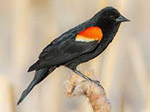 Redwing Blackbird: Red-winged blackbirds are common and conspicuous songbirds that can be seen and heard at the Necedah National Wildlife Refuge, especially during spring and summer. They have a black body, a red shoulder patch, and a yellow wing bar. They are omnivorous and feed on seeds, insects, and other animals. They nest in marshes, wetlands, and grasslands, where they build cup-shaped nests of grasses and sedges. They are polygynous, meaning that one male mates with several females and defends a territory that contains their nests. Red-winged blackbirds are one of the most abundant and widespread birds in North America, with a population of over 200 million individuals. They are also one of the most studied birds, as they provide insights into topics such as ecology, evolution, behavior, and conservation. They are adaptable and resilient and can cope with habitat changes and human disturbances. However, they also face some threats, such as habitat loss, degradation, and fragmentation, as well as predation, parasitism, and disease. Red-winged blackbirds are part of the rich biodiversity and beauty of the Necedah National Wildlife Refuge, and they need our respect and support to survive and thrive. You can enjoy watching and listening to these birds at the refuge, as well as learn more about them and their habitats.
Redwing Blackbird: Red-winged blackbirds are common and conspicuous songbirds that can be seen and heard at the Necedah National Wildlife Refuge, especially during spring and summer. They have a black body, a red shoulder patch, and a yellow wing bar. They are omnivorous and feed on seeds, insects, and other animals. They nest in marshes, wetlands, and grasslands, where they build cup-shaped nests of grasses and sedges. They are polygynous, meaning that one male mates with several females and defends a territory that contains their nests. Red-winged blackbirds are one of the most abundant and widespread birds in North America, with a population of over 200 million individuals. They are also one of the most studied birds, as they provide insights into topics such as ecology, evolution, behavior, and conservation. They are adaptable and resilient and can cope with habitat changes and human disturbances. However, they also face some threats, such as habitat loss, degradation, and fragmentation, as well as predation, parasitism, and disease. Red-winged blackbirds are part of the rich biodiversity and beauty of the Necedah National Wildlife Refuge, and they need our respect and support to survive and thrive. You can enjoy watching and listening to these birds at the refuge, as well as learn more about them and their habitats.
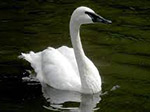
Trumpeter Swan
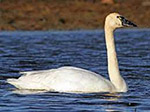
Tundra Swan
Trumpeter and Tundra Swans: The Necedah National Wildlife Refuge is a great place to see trumpeter and tundra swans, which are two species of large and majestic waterfowl that migrate through Wisconsin every year. Trumpeter swans are the largest and heaviest of all swans, with a wingspan of up to eight feet and a weight of up to 30 pounds. They have a pure white plumage, a black bill, and a loud, trumpet-like call. Tundra swans are slightly smaller and lighter than trumpeter swans, with a wingspan of up to six feet and a weight of up to 20 pounds. They have a mostly white plumage, a black bill with a yellow spot, and a soft, musical call. Both species breed in the northern regions of North America, such as Alaska and Canada, and winter in the southern and coastal states, such as California and Maryland.
The refuge provides a suitable habitat and food source for both trumpeter and tundra swans, as it has a variety of wetlands, such as marshes, pools, and flowages, where the swans can rest, feed, and socialize. The swans feed mainly on aquatic plants, such as pondweed, coontail, and wild rice, which they reach by dipping their long necks into the water. The refuge also protects and monitors the swan population and conducts research and outreach activities to increase public awareness and appreciation of these magnificent birds.
You can see trumpeter and tundra swans at the refuge during spring and fall migration, which usually occur from March to May and from October to December, respectively. The peak migration periods vary depending on the weather and the availability of open water. You can usually view swans from the observation decks, trails, and roads of the refuge, especially near the major wetlands, such as Sprague Pool, Suk Cerney Flowage, and Harvey Pond. You can also hear their distinctive calls echoing across the refuge. You can find more information about the refuge and its wildlife on its website.
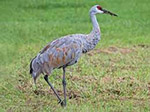 Sandhill cranes: Sandhill cranes are large and elegant birds that can be seen and heard at the Necedah National Wildlife Refuge, especially during spring and fall migration. They have a gray body, a red crown, and a long neck and legs. They feed on seeds, grains, tubers, insects, and other animals. They mate for life and perform elaborate courtship dances. They nest in wetlands, such as marshes and sedge meadows, where they build mounds of vegetation and lay one or two eggs. They are social and vocal, and they form large flocks that fly in V-shaped formations. The refuge hosts the greater sandhill crane, which is the largest and heaviest subspecies, and the only one that breeds in Wisconsin. The refuge has one of the highest densities of nesting sandhill cranes in the state, with over 200 pairs recorded in 2019. The refuge also provides a stopover site for thousands of migrating sandhill cranes, which come from Canada and the western states to spend the winter in the southern states.
Sandhill cranes: Sandhill cranes are large and elegant birds that can be seen and heard at the Necedah National Wildlife Refuge, especially during spring and fall migration. They have a gray body, a red crown, and a long neck and legs. They feed on seeds, grains, tubers, insects, and other animals. They mate for life and perform elaborate courtship dances. They nest in wetlands, such as marshes and sedge meadows, where they build mounds of vegetation and lay one or two eggs. They are social and vocal, and they form large flocks that fly in V-shaped formations. The refuge hosts the greater sandhill crane, which is the largest and heaviest subspecies, and the only one that breeds in Wisconsin. The refuge has one of the highest densities of nesting sandhill cranes in the state, with over 200 pairs recorded in 2019. The refuge also provides a stopover site for thousands of migrating sandhill cranes, which come from Canada and the western states to spend the winter in the southern states.
You can see sandhill cranes at the refuge during spring and fall migration, which usually occur from March to May and from October to December, respectively. The peak migration periods vary depending on the weather and the availability of open water and food. You can usually view cranes from the observation decks, trails, and roads of the refuge, especially near the major wetlands, such as Sprague Pool, Goose Pool, Suk Cerney Flowage, Rynearson Pool 1, and Harvey’s Pond. You can also hear their distinctive calls echoing across the refuge.

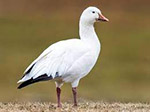 Geese: Geese are common and conspicuous birds that can be seen and heard at the Necedah National Wildlife Refuge, a large, protected area in Wisconsin that provides habitat for many common and endangered animals and plants. Geese are waterfowl that belong to the family Anatidae, which also includes ducks and swans. They have a long neck, a large body, and webbed feet. They feed on aquatic plants, grasses, grains, and other foods. They mate for life and nest in colonies on the ground or in trees. They are social and vocal, and they form large flocks that fly in V-shaped formations. They have a variety of calls, such as honks, hisses, and cackles.
Geese: Geese are common and conspicuous birds that can be seen and heard at the Necedah National Wildlife Refuge, a large, protected area in Wisconsin that provides habitat for many common and endangered animals and plants. Geese are waterfowl that belong to the family Anatidae, which also includes ducks and swans. They have a long neck, a large body, and webbed feet. They feed on aquatic plants, grasses, grains, and other foods. They mate for life and nest in colonies on the ground or in trees. They are social and vocal, and they form large flocks that fly in V-shaped formations. They have a variety of calls, such as honks, hisses, and cackles.
The refuge hosts two species of geese: the Canada goose and the snow goose. The Canada goose is the most widespread and familiar goose in North America. It has a black head and neck, a white chinstrap, a brownish-gray body, and a black tail. It can weigh up to 14 pounds and has a wingspan of up to six feet. It breeds in various habitats, such as wetlands, grasslands, and agricultural fields, and winters in southern and coastal states. It is adaptable and resilient and can cope with habitat changes and human disturbances. However, it also faces some threats, such as illegal killing, disease, and collisions with vehicles and power lines. It is also sometimes considered as a pest or nuisance, as it can damage crops, pollute water, or harass people and pets.
The snow goose is a smaller and less common goose in North America. It has white plumage, a pink bill, and black wingtips. It can weigh up to six pounds and has a wingspan of up to five feet. It breeds in the Arctic tundra, and winters in the southern and coastal states. It feeds mainly on roots, tubers, and stems of sedges and grasses, which it digs up with its strong bill. It is a long-distance migrant, traveling up to 3,000 miles between its breeding and wintering grounds. It is a declining species in Wisconsin, due to habitat loss, degradation, and fragmentation, as well as hunting and climate change.
Duck species: There are several migrating duck species that can be seen at the Necedah National Wildlife Refuge, a large protected area in Wisconsin that provides habitat for many common and endangered animals and plants. Some of the duck species that you can see at the refuge are:
 Wood duck: This is a small and colorful duck that has a crested head, a long tail, and a distinctive pattern of white markings on its face and body. The male has a glossy green and purple head, a chestnut breast, and a yellow eye, while the female is gray-brown with a white eye-ring and a white patch on the throat. It nests in tree cavities near water, and feeds on seeds, fruits, insects, and other foods. It is one of the most common and widespread ducks in North America, and it can be found in various habitats, such as wetlands, forests, and fields.
Wood duck: This is a small and colorful duck that has a crested head, a long tail, and a distinctive pattern of white markings on its face and body. The male has a glossy green and purple head, a chestnut breast, and a yellow eye, while the female is gray-brown with a white eye-ring and a white patch on the throat. It nests in tree cavities near water, and feeds on seeds, fruits, insects, and other foods. It is one of the most common and widespread ducks in North America, and it can be found in various habitats, such as wetlands, forests, and fields.
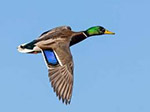 Mallard: This is a medium-sized and familiar duck that has a rounded head, a long body, and a curled tail. The male has a glossy green head, a yellow bill, a gray body, and a black tail, while the female is mottled brown with an orange bill and a white tail. It nests on the ground near water, and feeds on aquatic plants, grains, insects, and other foods. It is the most abundant and widespread duck in the world, and it can be found in almost any habitat with water, such as ponds, lakes, rivers, marshes, and parks.
Mallard: This is a medium-sized and familiar duck that has a rounded head, a long body, and a curled tail. The male has a glossy green head, a yellow bill, a gray body, and a black tail, while the female is mottled brown with an orange bill and a white tail. It nests on the ground near water, and feeds on aquatic plants, grains, insects, and other foods. It is the most abundant and widespread duck in the world, and it can be found in almost any habitat with water, such as ponds, lakes, rivers, marshes, and parks.
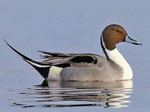 Northern pintail: This is a large and elegant duck that has a slender neck, a pointed tail, and a long bill. The male has a brown head, a white breast, a gray body, and a black tail, while the female is gray brown with a white patch on the throat. It nests on the ground in open areas near water, and feeds on seeds, aquatic plants, insects, and other foods. It is a long-distance migrant, traveling from North America to Europe, Asia, and Africa every year. fields. These are some of the most common duck species that you can see at the Necedah National Wildlife Refuge, but we are often visited by pelicans, loons and other species.
Northern pintail: This is a large and elegant duck that has a slender neck, a pointed tail, and a long bill. The male has a brown head, a white breast, a gray body, and a black tail, while the female is gray brown with a white patch on the throat. It nests on the ground in open areas near water, and feeds on seeds, aquatic plants, insects, and other foods. It is a long-distance migrant, traveling from North America to Europe, Asia, and Africa every year. fields. These are some of the most common duck species that you can see at the Necedah National Wildlife Refuge, but we are often visited by pelicans, loons and other species.
These are some of the migrating bird species that you can see during spring and fall migration at the Necedah National Wildlife Refuge. You can also enjoy other recreational activities, such as hiking, hunting, fishing, and photography, as well as educational and interpretive programs, such as the annual Birds, Bees and Butterflies event in June. The refuge is open daily from sunrise to sunset, and the visitor center is open Monday to Friday from 9:00 a.m. to 3:00 p.m.
(All images courtesy of All About Birds)
The Endangered Species in the Refuge
 Whooping crane: This is the tallest bird in North America, with a height of about five feet and a wingspan of about seven feet. It has a distinctive white plumage with black wingtips and a red crown. It is one of the most endangered cranes in the world, with only about 800 individuals left in the wild. The refuge hosts the largest concentration of the eastern migratory population of whooping cranes, which was reintroduced by Operation Migration, a project that used ultralight aircraft to guide young cranes on their first migration from Wisconsin to Florida.
Whooping crane: This is the tallest bird in North America, with a height of about five feet and a wingspan of about seven feet. It has a distinctive white plumage with black wingtips and a red crown. It is one of the most endangered cranes in the world, with only about 800 individuals left in the wild. The refuge hosts the largest concentration of the eastern migratory population of whooping cranes, which was reintroduced by Operation Migration, a project that used ultralight aircraft to guide young cranes on their first migration from Wisconsin to Florida.
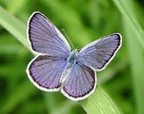 Karner blue butterfly: This is a small and beautiful butterfly that has a wingspan of about one inch. It has pale blue markings on the upper side of its wings and orange spots on the lower side. It depends on the wild lupine plant for its survival, as its caterpillars feed only on the leaves of this plant. The wild lupine grows in sandy pine-oak savanna, a rare and threatened habitat type that is found in the refuge. The refuge has the world’s largest population of Karner blue butterflies, thanks to the habitat management and restoration efforts that maintain and create areas suitable for both the wild lupine and the butterfly.
Karner blue butterfly: This is a small and beautiful butterfly that has a wingspan of about one inch. It has pale blue markings on the upper side of its wings and orange spots on the lower side. It depends on the wild lupine plant for its survival, as its caterpillars feed only on the leaves of this plant. The wild lupine grows in sandy pine-oak savanna, a rare and threatened habitat type that is found in the refuge. The refuge has the world’s largest population of Karner blue butterflies, thanks to the habitat management and restoration efforts that maintain and create areas suitable for both the wild lupine and the butterfly.
 Wolves: Wolves are one of the wildlife species that live in the Necedah National Wildlife Refuge, a large, protected area in Wisconsin that provides habitat for many common and endangered animals and plants. Wolves are also known as gray wolves or timber wolves, and they are the largest members of the dog family. They have thick fur, long legs, and a bushy tail. They are social animals that live in packs of 2 to 15 individuals, led by an alpha male and female. They communicate with each other using howls, barks, growls, and body language. They hunt mainly deer, elk, moose, and beaver, but they also scavenge on carrion and eat berries and other plants. They can travel up to 40 miles a day in search of food.
Wolves: Wolves are one of the wildlife species that live in the Necedah National Wildlife Refuge, a large, protected area in Wisconsin that provides habitat for many common and endangered animals and plants. Wolves are also known as gray wolves or timber wolves, and they are the largest members of the dog family. They have thick fur, long legs, and a bushy tail. They are social animals that live in packs of 2 to 15 individuals, led by an alpha male and female. They communicate with each other using howls, barks, growls, and body language. They hunt mainly deer, elk, moose, and beaver, but they also scavenge on carrion and eat berries and other plants. They can travel up to 40 miles a day in search of food.
Wolves were once widespread and abundant in North America, but they were nearly exterminated by humans in the 19th and 20th centuries due to habitat loss, persecution, and poisoning. They were listed as federally endangered in Wisconsin in 1967, and only a few wolves remained in the state by the 1970s. However, thanks to legal protection, public education, and habitat restoration, wolves have made a remarkable comeback in Wisconsin and other states. Wolves began to naturally migrate into Wisconsin from Minnesota in the late 1970s, and they have reclaimed their territory with several packs located in and outside the refuge. The refuge provides a safe and suitable habitat for wolves, as it has abundant prey, diverse vegetation, and minimal human disturbances are an important part of the ecosystem, as they help regulate the populations of their prey and maintain the balance and diversity of nature. They are also a symbol of wilderness and a source of wonder and inspiration for many people. Wolves are still threatened by illegal killing, disease, and habitat fragmentation, and they need our respect and support to survive and thrive. The Necedah National Wildlife Refuge and its partners are working to protect and enhance the wolf population and its habitat, as well as to foster a positive and coexisting relationship between wolves and humans.
 Blanding’s turtle: This is a medium-sized turtle that has a high-domed shell, a long neck, and a bright yellow throat. It lives in wetlands, such as ponds, marshes, and streams, where it feeds on plants, insects, crayfish, and fish. It is a long-lived species, with some individuals reaching over 70 years of age. It is threatened by habitat loss, fragmentation, and degradation, as well as predation, road mortality, and illegal collection. The refuge protects and enhances the habitat and population of this turtle, as well as conducts monitoring and outreach activities.
Blanding’s turtle: This is a medium-sized turtle that has a high-domed shell, a long neck, and a bright yellow throat. It lives in wetlands, such as ponds, marshes, and streams, where it feeds on plants, insects, crayfish, and fish. It is a long-lived species, with some individuals reaching over 70 years of age. It is threatened by habitat loss, fragmentation, and degradation, as well as predation, road mortality, and illegal collection. The refuge protects and enhances the habitat and population of this turtle, as well as conducts monitoring and outreach activities.
These are some of the endangered species that you can find in the Necedah National Wildlife Refuge. They are part of the rich biodiversity and beauty of the refuge, and they need our help and respect to survive and thrive.
Karner Blue Butterfly
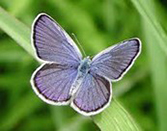 The Necedah National Wildlife Refuge and the Karner blue butterfly have a close relationship that involves conservation, restoration, and education. The Karner blue butterfly is a small and endangered butterfly that depends on the wild lupine plant for its survival. The wild lupine grows in sandy pine-oak savanna, a rare and threatened habitat type that is found in the refuge. The refuge has been conducting habitat management strategies to maintain and create areas suitable for both the wild lupine and the Karner blue butterfly, such as prescribed burning, mowing, and herbicide application. The refuge also monitors the population dynamics and distribution of the Karner blue butterfly, using methods such as surveys and distance sampling. The refuge also participates in the Wisconsin Karner Blue Butterfly Habitat Conservation Plan, which is a cooperative effort among various public and private landowners to protect and restore the Karner blue butterfly and its habitat across the state.
The Necedah National Wildlife Refuge and the Karner blue butterfly have a close relationship that involves conservation, restoration, and education. The Karner blue butterfly is a small and endangered butterfly that depends on the wild lupine plant for its survival. The wild lupine grows in sandy pine-oak savanna, a rare and threatened habitat type that is found in the refuge. The refuge has been conducting habitat management strategies to maintain and create areas suitable for both the wild lupine and the Karner blue butterfly, such as prescribed burning, mowing, and herbicide application. The refuge also monitors the population dynamics and distribution of the Karner blue butterfly, using methods such as surveys and distance sampling. The refuge also participates in the Wisconsin Karner Blue Butterfly Habitat Conservation Plan, which is a cooperative effort among various public and private landowners to protect and restore the Karner blue butterfly and its habitat across the state.
The Necedah National Wildlife Refuge also provides opportunities for visitors to learn about and appreciate the Karner blue butterfly and its habitat. The refuge hosts the annual Birds, Bees and Butterflies event in June which features guided walks, exhibits, activities, and presentations about the birds, bees and butterflies and their conservation. The refuge also offers educational and interpretive programs for schools and groups that teaches students about the life cycle, ecology, and management of the Karner blue butterfly. The refuge also encourages citizen science and volunteer involvement, such as the Karner Blue Butterfly Monitoring Program, which trains volunteers to conduct surveys and collect data on the butterfly and its habitat.
The Necedah National Wildlife Refuge and the Karner blue butterfly are examples of how wildlife and people can coexist and benefit from each other. The refuge protects and enhances the habitat and population of the Karner blue butterfly, while the butterfly contributes to the biodiversity and beauty of the refuge. The refuge and the butterfly also inspire and educate people about the importance and value of nature and conservation.
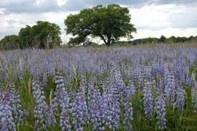
The Raptors on the Refuge
There are many species of raptors that call the refuge home. Some of them include:
Bald Eagles on the Refuge
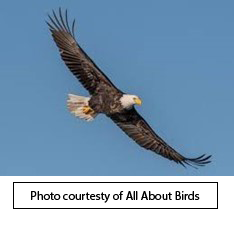 Bald eagles are one of the wildlife species that live in the Necedah National Wildlife Refuge, a large, protected area in Wisconsin that provides habitat for many common and endangered animals and plants. Bald eagles are the national symbol of the United States, and they are admired for their strength, beauty, and grace. They have a distinctive white head and tail, a dark brown body, and a yellow beak and feet. They have a wingspan of about seven feet and can weigh up to 14 pounds. They feed mainly on fish, but they also eat other birds, mammals, reptiles, and carrion. They mate for life and build large nests in tall trees near water. They can live up to 30 years in the wild.
Bald eagles are one of the wildlife species that live in the Necedah National Wildlife Refuge, a large, protected area in Wisconsin that provides habitat for many common and endangered animals and plants. Bald eagles are the national symbol of the United States, and they are admired for their strength, beauty, and grace. They have a distinctive white head and tail, a dark brown body, and a yellow beak and feet. They have a wingspan of about seven feet and can weigh up to 14 pounds. They feed mainly on fish, but they also eat other birds, mammals, reptiles, and carrion. They mate for life and build large nests in tall trees near water. They can live up to 30 years in the wild.
Bald eagles nest, feed, and rest on the refuge. You can usually view eagles soaring over the refuge’s major wetlands, such as Sprague Pool, Goose Pool, Suk Cerney Flowage, and Harvey’s Pond. The refuge has several active eagle nests, which are monitored and protected by the refuge staff and volunteers. The refuge also hosts wintering eagles, which come from northern states and Canada to find open water and food sources.
Bald eagles were once endangered due to habitat loss, illegal shooting, and pesticide poisoning. They were listed as federally endangered in 1967, and only a few hundred pairs remained in the lower 48 states by the 1970s. However, thanks to legal protection, public education, and conservation efforts, bald eagles have made a remarkable recovery. They were removed from the federal list of threatened and endangered species in 2007, and now there are over 10,000 pairs in the lower 48 states. Bald eagles are still protected by the Bald and Golden Eagle Protection Act and the Migratory Bird Treaty Act, which prohibit killing, harming, or disturbing eagles or their nests.
Bald eagles are an important part of the ecosystem, as they help regulate the populations of their prey and maintain the balance and diversity of nature. They are also a symbol of freedom and pride, and a source of wonder and inspiration for many people. Bald eagles are part of the rich biodiversity and beauty of the Necedah National Wildlife Refuge, and they need our respect and support to survive and thrive.
The Hawks of the Refuge
Hawks are a group of birds of prey that belong to the family Accipitridae, which also includes eagles, kites, and vultures. Hawks have sharp talons, hooked beaks, and keen eyesight that help them hunt and catch their prey. Hawks are found in many habitats around the world, from deserts to forests to mountains. Hawks are also common and widespread in Wisconsin, where they can be seen in diverse habitats such as open fields, woodlands, and urban areas.
Necedah National Wildlife Refuge is a great place to observe hawks in Wisconsin, as it is a diverse ecosystem that includes open tallgrass prairies, sprawling savannas, numerous wetland types including sedge meadows, and is home to many common and protected species.
Some of the hawks that can be seen in Necedah National Wildlife Refuge are:
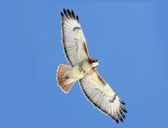 Red-tailed Hawk: This is the most common and widespread hawk species in Wisconsin and can be found throughout the state in diverse habitats. Red-tailed Hawks are large and powerful, with broad wings and a distinctive red tail. They feed on rodents, rabbits, birds, and reptiles. They are often seen soaring high in the sky or perched on poles or trees.
Red-tailed Hawk: This is the most common and widespread hawk species in Wisconsin and can be found throughout the state in diverse habitats. Red-tailed Hawks are large and powerful, with broad wings and a distinctive red tail. They feed on rodents, rabbits, birds, and reptiles. They are often seen soaring high in the sky or perched on poles or trees.
 Cooper’s Hawk: This is a medium-sized hawk that specializes in hunting birds, such as pigeons, doves, and songbirds. Cooper’s Hawks have long tails and short wings that help them maneuver through dense vegetation. They are often seen in woodlands, tall trees, suburban neighborhoods, and city parks.
Cooper’s Hawk: This is a medium-sized hawk that specializes in hunting birds, such as pigeons, doves, and songbirds. Cooper’s Hawks have long tails and short wings that help them maneuver through dense vegetation. They are often seen in woodlands, tall trees, suburban neighborhoods, and city parks.
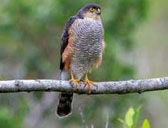 Sharp-shinned Hawk: This is a small hawk that resembles the Cooper’s Hawk but has a smaller head and thinner legs. Sharp-Shinned Hawks also hunt birds, but usually smaller ones, such as sparrows, finches, and warblers. They are often seen in forest edges, thickets, and shrubby areas.
Sharp-shinned Hawk: This is a small hawk that resembles the Cooper’s Hawk but has a smaller head and thinner legs. Sharp-Shinned Hawks also hunt birds, but usually smaller ones, such as sparrows, finches, and warblers. They are often seen in forest edges, thickets, and shrubby areas.
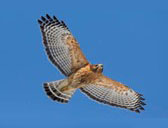 Red-shouldered Hawk: This is a medium-sized hawk that has a reddish-brown chest and shoulders, and black-and-white barred wings and tail. Red-shouldered Hawks feed on small mammals, amphibians, reptiles, and occasionally birds. They are often seen in riparian habitats and wetland areas, especially along rivers and lakeshores.
Red-shouldered Hawk: This is a medium-sized hawk that has a reddish-brown chest and shoulders, and black-and-white barred wings and tail. Red-shouldered Hawks feed on small mammals, amphibians, reptiles, and occasionally birds. They are often seen in riparian habitats and wetland areas, especially along rivers and lakeshores.
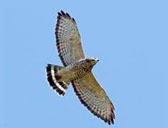 Broad-winged Hawk: This is a small hawk that has a dark brown back and a light brown chest with dark streaks. Broad-winged Hawks feed on rodents, frogs, snakes, and insects. They are often seen in forests and can be observed during their migration periods, often forming kettles (large swirling flocks) during their journey.
Broad-winged Hawk: This is a small hawk that has a dark brown back and a light brown chest with dark streaks. Broad-winged Hawks feed on rodents, frogs, snakes, and insects. They are often seen in forests and can be observed during their migration periods, often forming kettles (large swirling flocks) during their journey.
Other hawks that are rare or occasional visitors to Necedah National Wildlife Refuge are the Swainson’s Hawk, the Northern Harrier, and the Ferruginous Hawk Broad.
If you are interested in seeing hawks at Necedah National Wildlife Refuge, you can visit the refuge’s website or the visitor center to find out more information about the trails, maps, and regulations. You can also enjoy activities such as hiking, hunting, fishing, wildlife watching, and photography in the refuge. The refuge is open year-round, from sunrise to sunset. The best time to see hawks is during the spring and fall migration seasons, when they are more active and visible. You might also want to bring a pair of binoculars or a spotting scope to get a better view of these magnificent birds.
All images courtesy of All About Birds
The Owls of the Refuge
There are four species of owls that have been recorded at the Necedah National Wildlife Refuge. They are:

Great horned owl: This is a large and powerful owl that has a areas. It feeds on a variety of prey, such as rodents, rabbits, birds, reptiles, and amphibians. It nests in tree cavities, abandoned nests, or artificial platforms. It is a year-round resident at the refuge, and it can be seen or heard at night or during dawn and dusk.
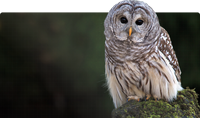
Barred owl: This is a medium-sized owl that has a brown and white striped plumage, dark eyes, and a round head without ear tufts. It is a common and vocal owl in eastern North America, and it can be found in moist and mature forests near water. It feeds mainly on small mammals, such as mice, squirrels, and voles, but it also eats birds, frogs, fish, and insects. It nests in tree cavities, old nests, or nest boxes. It is a year-round resident at the refuge, and it can be seen or heard at night or during the day.
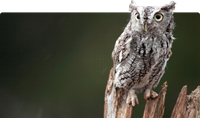
Eastern screech-owl: This is a small and secretive owl that has a gray, brown, or red plumage, yellow eyes, and ear tufts. It is a widespread and adaptable owl in eastern North America, and it can be found in various habitats, such as woodlands, orchards, parks, and suburbs. It feeds on a variety of prey, such as insects, spiders, worms, mice, birds, and bats. It nests in tree cavities, nest boxes, or other sheltered places. It is a year-round resident at the refuge, and it can be seen or heard at night or during the day.
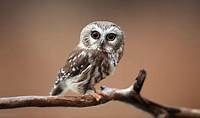
Northern saw-whet owl: This is a tiny and elusive owl that has a brown and white plumage, yellow eyes, and a round head without ear tufts. It is a rare and irregular owl in Wisconsin, and it can be found in coniferous or mixed forests near water. It feeds mainly on small rodents, such as deer mice, shrews, and voles, but it also eats birds, insects, and amphibians. It nests in tree cavities, old nests, or nest boxes. It is a winter visitor at the refuge, and it can be seen or heard at night or during the day.
These are some of the owls that you can see at the Necedah National Wildlife Refuge. You can also enjoy other recreational activities, such as hiking, hunting, fishing, and photography, as well as educational and interpretive programs, such as the annual Birds, Bees and Butterflies event in June.
Wild Turkeys of the Refuge
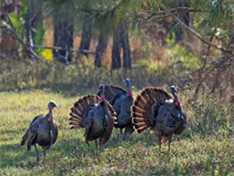 Wild turkeys are one of the wildlife species that can be found in the sedge meadows of Necedah National Wildlife Refuge. According to the U.S. Fish and Wildlife Service, the refuge has a healthy population of wild turkeys that appears to be increasing. Wild turkeys are native to North America and were reintroduced to Wisconsin in the 1970s after being extirpated by overhunting and habitat loss. Wild turkeys are omnivorous and feed on seeds, nuts, fruits, insects, and small animals. They roost in trees at night and form flocks during the day. Wild turkeys have excellent vision and hearing but are not very good at flying. They can run up to 25 miles per hour and can fly short distances at speeds of up to 55 miles per hour.
Wild turkeys are one of the wildlife species that can be found in the sedge meadows of Necedah National Wildlife Refuge. According to the U.S. Fish and Wildlife Service, the refuge has a healthy population of wild turkeys that appears to be increasing. Wild turkeys are native to North America and were reintroduced to Wisconsin in the 1970s after being extirpated by overhunting and habitat loss. Wild turkeys are omnivorous and feed on seeds, nuts, fruits, insects, and small animals. They roost in trees at night and form flocks during the day. Wild turkeys have excellent vision and hearing but are not very good at flying. They can run up to 25 miles per hour and can fly short distances at speeds of up to 55 miles per hour.
If you want to see wild turkeys at Necedah National Wildlife Refuge, you can visit the refuge’s website or the visitor center to find out more information about the trails, maps, and regulations. You can also enjoy activities such as hiking, hunting, fishing, wildlife watching, and photography in the refuge. The refuge is open year-round, from sunrise to sunset. The spring season is a particularly good time to catch sight of a gobbler, a male wild turkey that displays its colorful feathers and makes loud gobbling sounds to attract females. You might also hear the clucking, purring, and yelping of the hens, the female wild turkeys, as they communicate with each other and their young. Wild turkeys are fascinating and beautiful birds that are part of the natural heritage of Wisconsin and Necedah National Wildlife Refuge.
The Whooping Crane Story
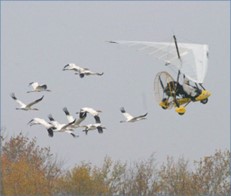 The Necedah National Wildlife Refuge played a key role in this project, as it was the site of the summer breeding and training grounds for the cranes. The refuge staff and volunteers worked closely with Operation Migration to provide suitable habitat, monitor the cranes, and support the migration flights. The project started in 2001 and ended in 2015, after successfully reintroducing over 100 whooping cranes to the eastern migratory population. Operation Migration was a non-profit organization that aimed to restore the endangered whooping crane population by using ultralight aircraft to guide young cranes on their first migration from Wisconsin to Florida. The project started in 2001 and ended in 2015, after successfully reintroducing over 100 whooping cranes to the eastern migratory population.
The Necedah National Wildlife Refuge played a key role in this project, as it was the site of the summer breeding and training grounds for the cranes. The refuge staff and volunteers worked closely with Operation Migration to provide suitable habitat, monitor the cranes, and support the migration flights. The project started in 2001 and ended in 2015, after successfully reintroducing over 100 whooping cranes to the eastern migratory population. Operation Migration was a non-profit organization that aimed to restore the endangered whooping crane population by using ultralight aircraft to guide young cranes on their first migration from Wisconsin to Florida. The project started in 2001 and ended in 2015, after successfully reintroducing over 100 whooping cranes to the eastern migratory population.
The Necedah National Wildlife Refuge continues to be involved in whooping crane conservation, as it hosts the largest concentration of the eastern migratory population. The refuge also participates in other initiatives, such as the Direct Autumn Release program, which releases captive-reared cranes into the wild without human guidance, and the Parent-Reared program, which allows captive adult cranes to raise and release their own chicks. The refuge also collaborates with other partners, such as the International Crane Foundation, the U.S. Geological Survey, and the Wisconsin Department of Natural Resources, to conduct research and management activities to protect and enhance the whooping crane population.
The Necedah National Wildlife Refuge is a vital place for whooping crane recovery, as well as for other wildlife and people. The refuge offers opportunities for visitors to observe and learn about these magnificent birds and their habitats, as well as to enjoy other recreational activities, such as hiking, hunting, fishing, and photography. The refuge also hosts educational and interpretive programs that celebrates the return of the cranes to Wisconsin in the spring.
Do you have a story to share? The Friends of the Necedah National Wildlife Refuge would love to hear from you! Your stories of your time at the Refuge, how it has impacted your life, or how the Refuge created a space for those “million dollar moments” are powerful and we would love to hear them! Did you know that the Necedah National Wildlife Refuge welcomes over 130,000 visitors each year? These visitors include school groups, 4H groups, Scouts, Senior groups, Veteran groups, birdwatchers, hunters, fishermen, kayakers, wood harvesters, trappers, wildlife photographers, artists, biologists, interns, volunteers, and community members seeking to enjoy all of the recreational options that the Refuge has to offer. The Refuge maintains healthy habitats for wildlife and supports threatened and endangered species. The Refuge is also responsible for monitoring and adjusting water levels to prevent downstream flooding and plays a large role in fire management. How has the Refuge played a role in your life? Do you have a story to share? Your stories matter! Please send it to contact@friendsofnnwr.org We would love to share your story with decision-makers and the world! Let’s show how much the Refuge means to all of us.
Founded in 1939, the Necedah National Wildlife Refuge is one of over 560 national refuges throughout the United States and its territories. The refuge is managed by the U.S. Fish and Wildlife Service within the Department of the Interior.
- Part of Ancient Glacial Lake Wisconsin
- Created in 1939 by FDR
- Over 44,000 Acres of habitat
- Bordered on the west by Meadow Valley Wildlife Area with 66,000 acres.
44,000 Acres that include:
- Six trails to enjoy (Almost 10 miles)
- Photo blinds
- Observation Tower
- Self-guided auto tours
- Observation decks
- 3 viewing scope locations
- Kiosks at important point
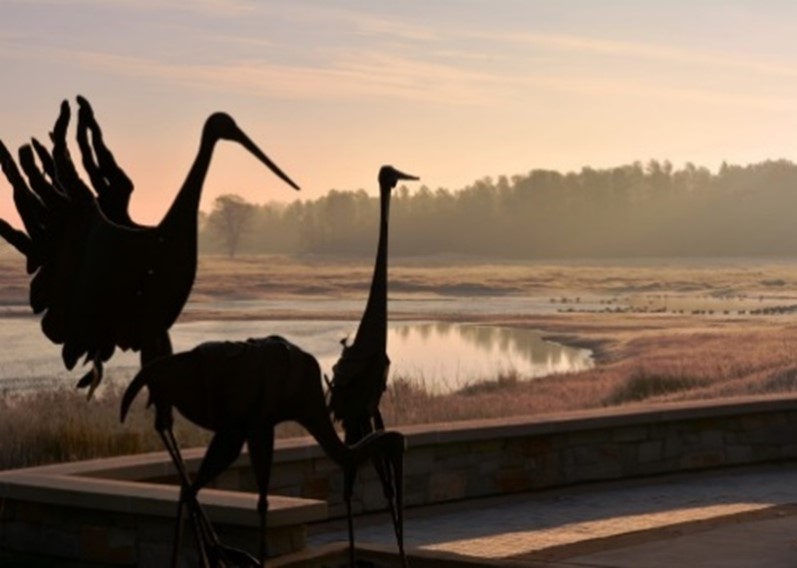
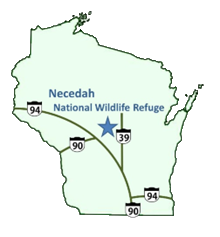
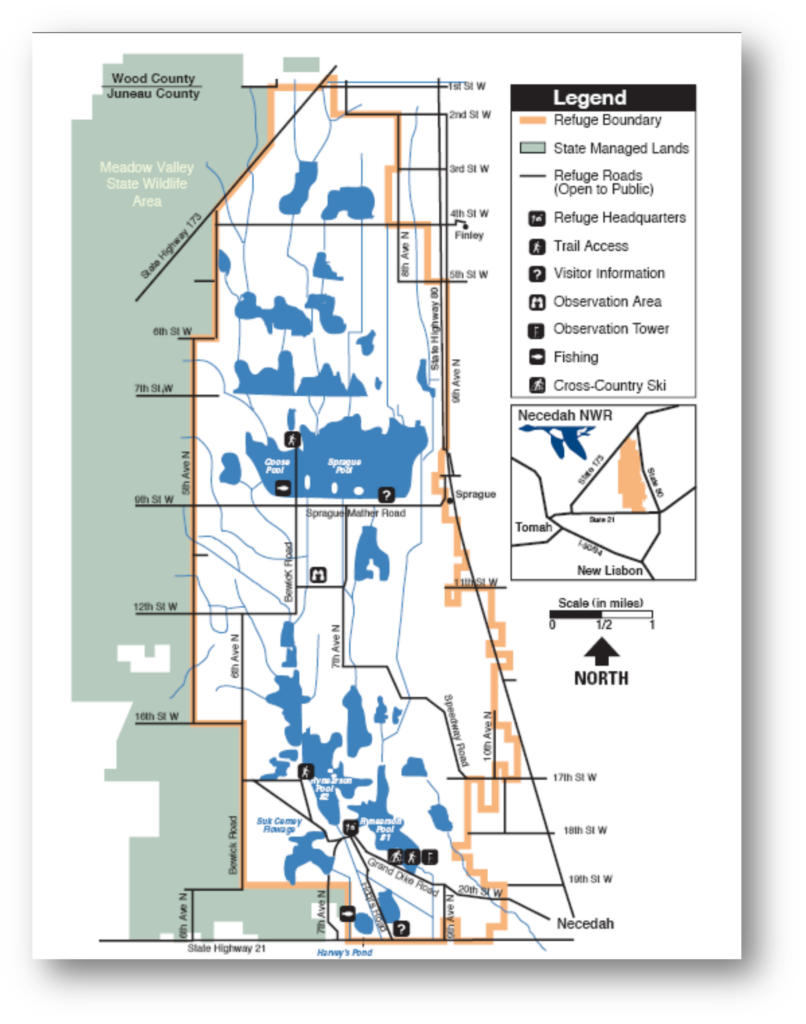
- We’re about 4 miles west of Necedah off Hwy 21 West.

